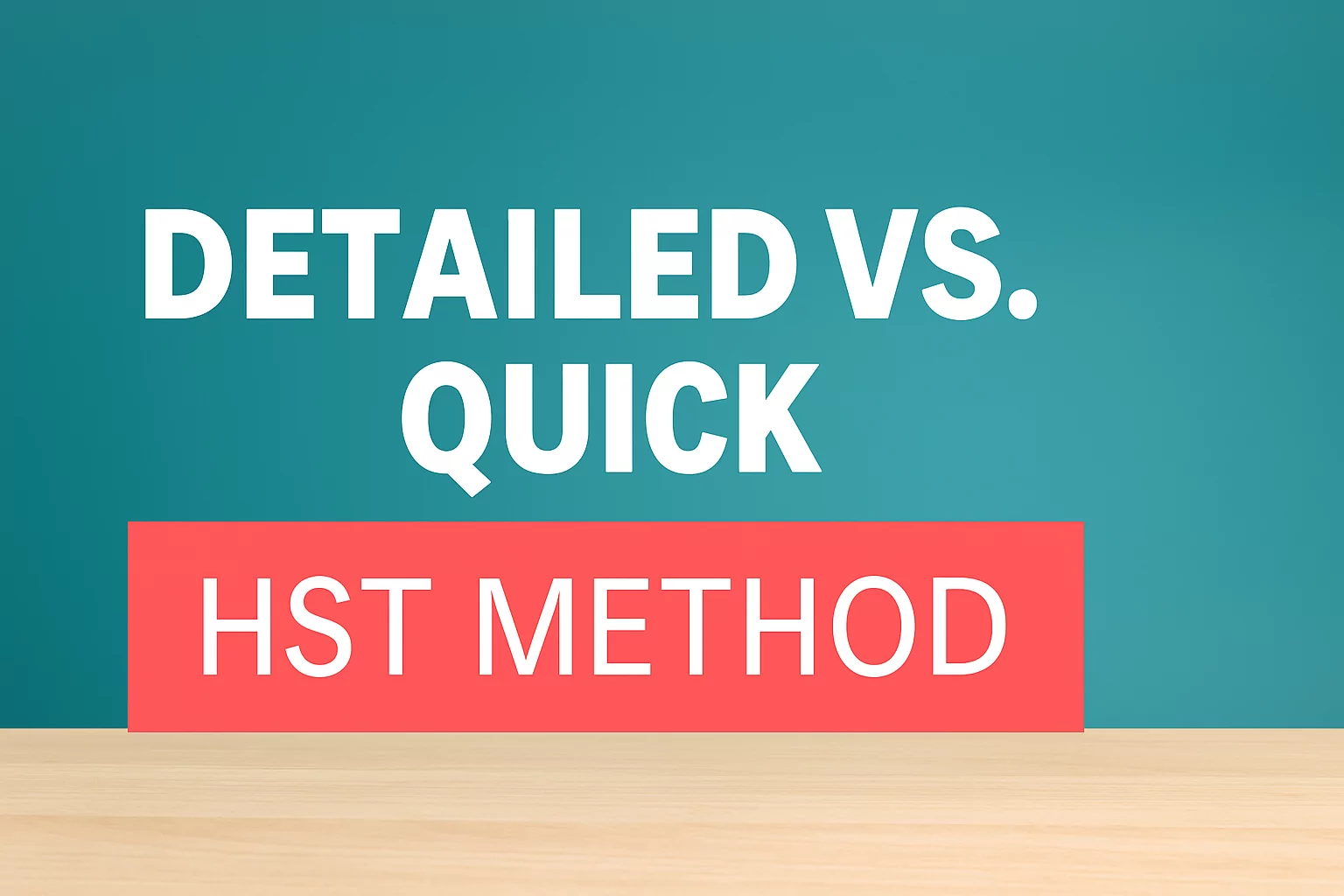If you’re a self-employed professional or realtor in Canada, choosing how to file your HST can have a direct impact on your bottom line. The HST Quick Method is a simplified alternative to the regular (detailed) method, and in certain cases, it can save you money and time.
But when is it actually the smarter option?
Let’s compare the two using a real-world scenario: $100,000 in income and $20,000 in annual expenses.
What Is the HST Quick Method?
The Quick Method lets you skip tracking HST paid on every business expense (called input tax credits). Instead, you charge HST as usual (13% in Ontario), but you remit a flat percentage of your gross revenue to the CRA.
In Ontario, the flat rate is 8.8% for service businesses, and you also get a 1% credit on the first $30,000 of income.
Example: $100,000 Income, $20,000 Expenses
Let’s compare the two methods side-by-side:
💼 Detailed Method
- HST Collected: $13,000
- HST Paid on Expenses (ITCs): $2,600
- Net HST Payable: $13,000 – $2,600 = $10,400
- HST You Keep: $2,600
⚡ Quick Method
- HST Collected: $13,000
- Quick Method Rate: 8.8% of $113,000 = $9,944
- 1% Credit on First $30K: $300
- Net HST Payable: $9,944 – $300 = $9,644
- HST You Keep: $13,000 – $9,644 = $3,356
📈 Final Verdict: Which Saves More?
| Method | HST You Keep | Paperwork |
|---|---|---|
| Quick Method | $3,356 | ✅ Easy |
| Detailed | $2,600 | ❌ Complex |
✅ In this example, Quick Method saves you $756 and makes filing simpler. It’s a win-win if:
- Your expenses are low
- You don’t claim large capital expenses
- You want predictable bookkeeping
When to Choose the Quick Method
Best for:
- Low-overhead businesses
- New self-employed professionals
Avoid if:
- You make large HST-eligible purchases
- You rely on claiming full input tax credits
- Your expenses are high (over 40% of income)
💡 Pro Tip: Simplicity = Savings
The HST Quick Method isn’t just about tax savings — it also means:
- Fewer audit risks
- Less time managing receipts
- Easier DIY filing or cheaper accounting

